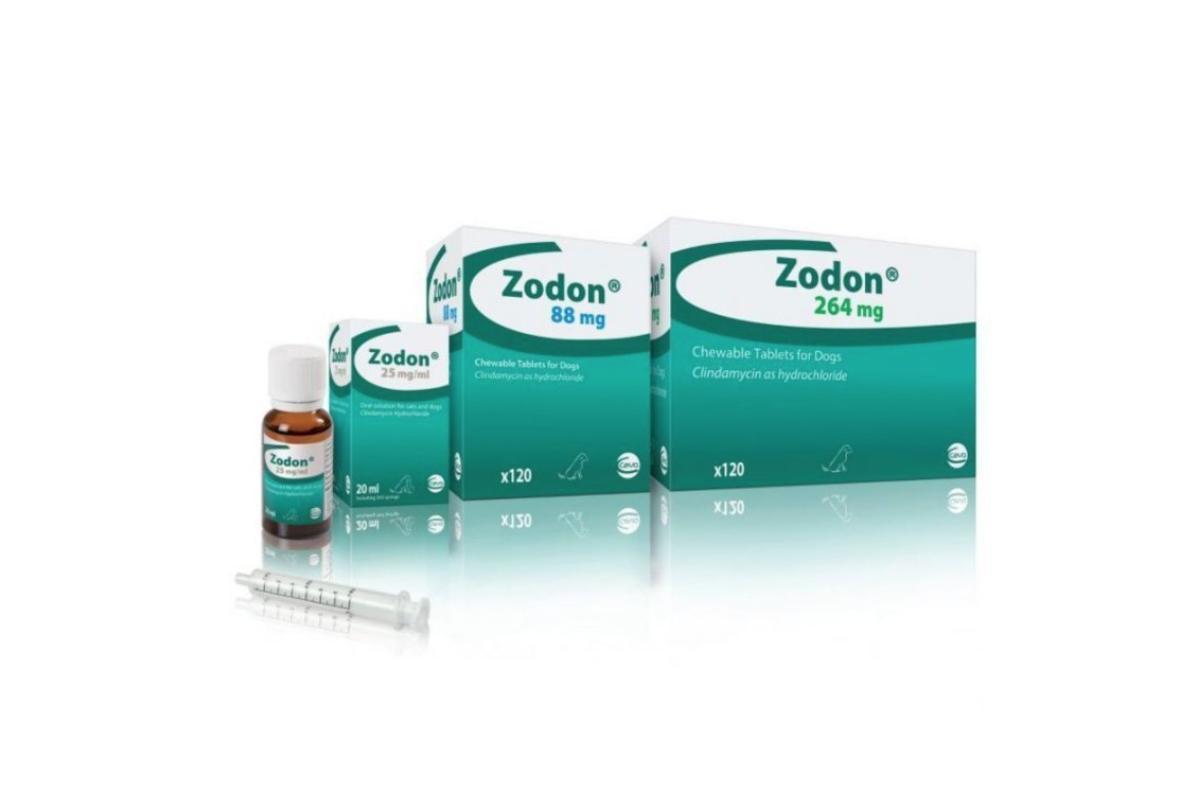Clindamycin for Cats - Uses and Dosage



See files for Cats
Clindamycin is a type of antibiotic which is used to treat various bacterial infections. It is used in both human and veterinary medicine. It is a prescription-only drug, meaning that it can only be given to an animal with express permission from a qualified veterinarian. Giving any drug to an animal without prescription, especially if it is originally intended for human use, can be seriously damaging. It cam even be fatal in some cases. Not only may the drug be inappropriate, but incorrect dosage can lead to overdose.
At AnimalWised, we look at the uses and dosage of clindamycin for cats. Sold under various trade names including Clindacyn, Clinsol and Zodon, we look at why a veterinarian might prescribe this antibiotic for your cat, as well as the possible side effects and contraindications of the drug.
What is clindamycin for cats?
Clindamycin is a commonly used antibiotic in veterinary medicine which is used to treat a wide range of infections. This is due to its bacteriostatic effect. Although it does not kill bacteria outright, it inhibits their growth so they are unable to reproduce and will die as a result. Specifically, its action is based on the inhibition of the protein synthesis of bacteria. Clindamycin is sold under various trade names, with those used in veterinary medicine including:
- Antirobe
- Clinacin
- Clindacyn
- Clinsol
- Zodon
Clindamycin is active in vitro against many gram-positive bacteria, as well as anaerobic gram-positive and gram-negative bacteria. However, many aerobic gram-negative bacteria are resistant to it. This is why it is important to for a veterinarian to diagnose which bacteria has infected a cat before administering antibiotic treatment.
The absorption of clindamycin after oral administration is almost total, the reason why it is often sold in capsule or oral suspension preparations. It is excreted mainly through feces and urine. Clindamycin for cats is often sold as an oral solution in 20 ml bottles with droppers to facilitate dosing and administration. It is also available in injectable formats, but this is usually restricted for clinical use.
Learn more about the danger of giving human antibiotics to cats in our related article.

Clindamycin for cats uses
As we have stated, clindamycin is an antibiotic. Antibiotics are used to treat bacterial infections, in this case medical conditions in which bacteria sensitive to clindamycin are involved. Its most common use is the treatment of infected wounds and abscesses caused by bacterial species of Staphylococcus or Streptococcus.
To find out if clindamycin is suitable for treating your cat's infection, your veterinarian will need to diagnose the problem. This will usually require diagnostic tests such as making a bacterial culture and sensitivity testing. They will then decide whether this antibiotic is more suitable than another. Such alternative antibiotics include doxycycline for cats and others.
Clindamycin for cats dosage
We reiterate the importance of only obtaining clindamycin for cats via a veterinary route. Not only will they determine whether this antibiotic is necessary to treat your cat, they will provide the correct dosage and administration schedule to best ensure its use is safe and effective.
The inappropriate use of antibiotic drugs poses serious risks. Not only may it provide serious side effects, but it will not treat the underlying problem. It can promote the proliferation of bacteria against which it is ineffective. It can also build bacterial resistance to bacteria sensitive to clindamycin, compromising future treatments. For all these reasons, we should never medicate our cat ourselves.
The veterinarian will calculate the most effective clindamycin dose based on the weight and circumstances of each individual cat. It is very important that the weight is calculated as accurately as possible. As an example, 11 mg per kg of clindamycin oral solution is administered once a day. The dose can also be divided into two daily doses. The treatment lasts approximately 7-10 days. The oral solution can be given directly into the mouth or mixed with a small amount of food.
If clindamycin is prescribed in capsule form, you may want to read our related article on how to give a cat a pill.
How much does clindamycin for cats cost?
As we have stated, clindamycin is a prescription-only medication, so you will need to see a veterinarian to obtain it legally. Its cost will vary according to different factors, including country of purchase and brand. Some generic brands may be cheaper. In the USA, pricing of clindamycin for cats is generally as follows:
- Oral suspension: drops of clindamycin are sold in 20 ml bottles which are sold for around $20 to $40.
- Capsules: capsules can be sold with various preparation amounts, usually in 75 to 150 mg. A bottle can contain 20 to 30 individual capsules and is usually priced at around $15 to $30 per bottle.
- Injection: this is usually the most expensive preparation of clindamycin for cats and is used under clinical supervision with prices ranging from $50 to $100 per treatment.
Clindamycin for cats side effects
When administered according to veterinary instruction, it is unlikely the cat will experience any adverse effects. This means providing the correct dosage and completing the full course of treatment. In cases where treatment is prolonged or high doses are required, the veterinarian may need checkups to ensure the cat is responding well to treatment of clindamycin. They may require blood tests to ensure liver and kidney function is not impaired.
Within a normal administration of low doses administered for about 7-10 days, some cats may present digestive disorders. These side effects may include such as vomiting and/or diarrhea, although this is a rare side effect.
Find out what are the symptoms of kidney failure in cats to learn how to observe for serious side effects of any medication.

Clindamycin for cats contraindications
Although clindamycin for cats is considered a safe drug when used appropriately, there are certain contraindications in some cats. In these cases, an alternative antibiotic will be required to treat the bacterial infection. For this reason, the following cases are contraindicated for its use in cats:
- Cats with kidney or liver problems: these may be a result of serious metabolic disorders. The cat may be able to take clindamycin, but the veterinarian will monitor the cat regularly via blood tests to ensure their organ function is not impaired further.
- Kittens: this antibiotic can be given to kittens, but not in all preparations. It must be dosed very carefully by the vet.
- Allergies: if we know or suspect that our cat may be allergic to clindamycin because we have already have observed an adverse reaction after its use, it is contraindicated. We need to advise the veterinarian and they will prescribe an alternative.
- Other drugs: if the cat is receiving treatment with other drugs and the veterinarian is not aware, they will need to be informed. Some of these drugs could interact with clindamycin and even cause serious complications. For example, the combination of clindamycin with gentamicin can lead to acute kidney failure in cats.
- Pregnant or lactating cats: while it may be safe for pregnant or lactating cats, only a veterinarian can assess the risk/benefit of prescribing clindamycin in these cases. It should be noted that clindamycin crosses the placenta and the blood-milk barrier. This means kittens may suffer side effects such as diarrhea if the mother is given clindamycin.
If the cat is unable to use clindamycin, it is possible they will be given alternatives such as azithromycin or cephalexin for cats.
This article is purely informative. AnimalWised does not have the authority to prescribe any veterinary treatment or create a diagnosis. We invite you to take your pet to the veterinarian if they are suffering from any condition or pain.
If you want to read similar articles to Clindamycin for Cats - Uses and Dosage, we recommend you visit our Medicine category.
- Department of Veterinary Medicines of the Spanish Agency for Medicines and Health Products (2019): Zodon 25 mg/ml oral solution for cats and dogs. https://cimavet.aemps.es/cimavet/pdfs/es/ft/3002%20ESP/3002_ESP_ft.pdf







